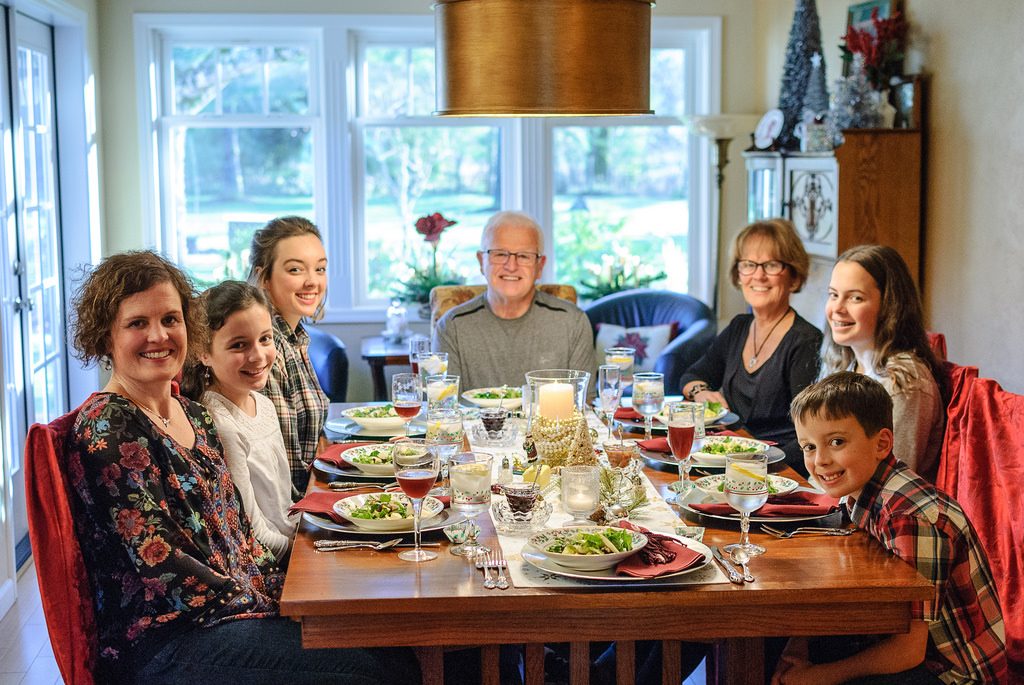
As the festive season lands on us again, it’s likely that most of our minds will have turned to celebrate the big day. While it might be tempting to look for less traditional options, such as eating in front of a new DVD or heading out to an exotic location, recent studies show that you and your child could actually be happiest with a traditional Christmas sit-down, complete with all possible family.
Research into British attitudes to a family dinner, and how often these are put into practice, by dining experts Furniture Village show the disparity between what we know is good for our children’s development over the festive season – and how often we’re able to put them into practice amid the rigours of daily life. To help UK families across the country have the best possible Christmas dinner, whatever their situation, they’ve teamed up with family therapist Dr Reenee Singh and nutritionist Samantha Paget for expert tips on how to make Christmas dinner productive and engaging, without being disruptive.
Do As I Say (But Not As I Do)
Academic research has demonstrated that eating together at the dining table can be hugely beneficial to children. Not only has it been shown to boost children’s vocabulary more than being read aloud to, but, for school going children, family dinners have shown to deliver better performance in school than doing homework, playing sports or doing art.
Undoubtedly, eating a traditional Christmas dinner round the table, and having a positive interaction with family members of all ages, are associated with stronger and more positive feelings that can overpower the tendency to overeat. This is confirmed by some recent studies suggesting that eating in the kitchen or at the dining room table and remaining at the table until everyone is finished eating are both associated with lower BMIs for parents and children. For anyone already conscious of a tendency to over-prepare or over-eat on Christmas Day, this could be the answer to our prayers!
This behaviour may also be related to less distracted eating or less supervised eating. Furthermore, eating together as a family more often is associated with a higher intake of nutrients linked to improved health — such as fruits and vegetables — and a lower intake of items that are recommended only in limited amounts (e.g., soft drinks, fried foods).
The latest survey into British family eating habits, however, has revealed an ambivalent relationship with Christmas meals and nutrition. When asked where they enjoyed eating the most,one in three respondents chose the traditional dinner table (top preference).70% even went to argue that family relationships are positively affected by a traditional Christmas meal, as are a child’s development (38%) and general mental health (28%).
However, what works in theory does not always translate in practice. The survey of more than 2,000 UK residents, commissioned by furniture retailer Furniture Village, highlighted that despite best intentions, reality differs from theory. Even when they acknowledged the benefits of eating around the dinner table, when asked why they didn’t do so, the majority of UK families (41%) admitted to settling the kids in front of Christmas TV while they ate. In fact, 54% of respondents admitted the preference for watching TV over conversations to be the top reason they don’t eat regularly at the dining table, followed by time spent on phones and technology (42%) and late working hours.
Commenting on this trend, family therapist, Dr Reenee Singh said: “Sitting around a dining table without digital distractions can provide an opportunity for the whole family to talk and engage. Children can learn good table manners and the art of having a conversation whilst eating their Christmas meal and can also develop an appreciation for good food.”
Making It Better
Those who successfully had Christmas meals frequently managed to create a family mealtime culture. This helps to set the expectation that family members are there for meals,developing a structured mealtime routine (e.g., set the table, institute a regular time to eat each day), and communicates work and after-school schedules with family members.
Other parents indicated that a strategy they used to overcome resistance to attending Christmas meals was making meals enjoyable and minimizing mealtime stress. Techniques used to increase enjoyment and reduce stress included serving foods that children enjoy alongside traditional fare, getting children involved in food preparation and shopping before the big day, and keeping mealtime conversation fun and interesting for the whole family, perhaps with Christmas cracker pulling or story-telling.
According to nutritionist Samantha Paget, at times we may struggle to eat a traditional family meal. In that case, she advised the following eight top tips, to get the benefits of eating together without setting unrealistic goals:
- Design a more festive space in which to dine, making the meal more of an event
- Eat together at a kitchen table or dining room with the television off
- Develop a routine on the day: set the table, institute a time to eat, and ensure any guests turn up on time
- Serve foods that children enjoy (serve sharing platters)
- Get children involved in food preparation and shopping
- Keep mealtime conversation fun and interesting for the whole family, with appropriate festive activities
- Encourage children to talk meaningfully about their day, for example asking about their enjoyment of their gifts
- Keep the area a tech-free zone
Top of the Class
With just a few changes to the Christmas dinner routine, it is possible to create a fun festive event which reaps all the mental and physical developmental benefits for children and their parents. For more information on how to action Stephanie’s top tips, you can find the full research into British eating habits all year round here.




